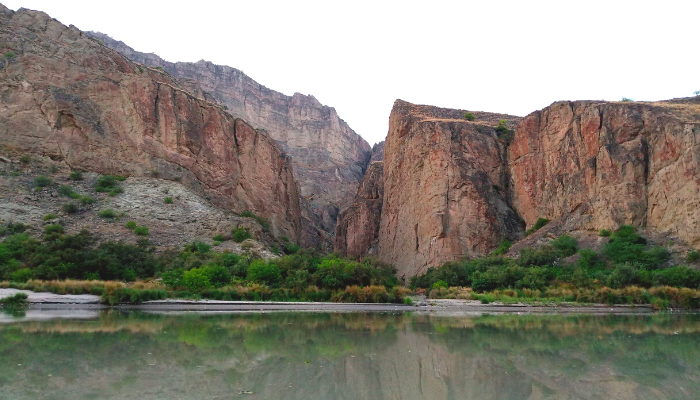
For us humans, the world, before it is lived, has to be imagined. There is, however, something wrong with the way we have imagined the world if we consider where we are today, in particular in the face of global climate change. Let’s review how we have imagined water from the point of view of critical geography.
How we have imagined water so far
So far, we have imagined water through the lens of the hydrological cycle. We have imagined it through the lens of Penman-Van Bavel-style equations. We have imagined it as H2O.
However, as stated by Linton (2010), in human experience, H2O does not exist. As soon as water leaves the rarefied confines of a laboratory, it bonds with other compounds to become something else – potable or non-potable, sacred or profane, resource or hazard water, etc. Equally, in human experience, the hydrological cycle is more like a hydro-social cycle (Linton and Budds, 2014), where water defies gravity and, metaphorically, flows upstream towards whoever has more power and money.
If we are to address the challenges of climate change, the lack of access to water, the increasing toll of water related hazards, for example, we urgently need to reimagine water in a way that moves beyond its alleged stable material reality as H2O. We need to imagine water in a hydro-social register or in any other way that may bring us closer to what water actually is.
Imagining water flows beyond ‘averages’
One of the key problems with contemporary water imaginaries and practices is their devotion to ‘average’ values of flows, precipitation, evaporation, water supply, etc. An average is a predictive model of data. This model has permeated hydrologic research and practice to the core.
However, in my work with indigenous and farmer communities across Asia and the Americas, I have found that farmers and communities have little notion of average/normal conditions (Mustafa et al. 2021, Mustafa & Qazi 2007). They always describe good days and bad days, good years and bad years, and never normal years or normal production. Their management paradigm is about managing ‘inward’ from extremes. Their question is: What is the worst that can happen, and what do I have to do to be still around should that happen?

Women taking the lead in articulating water pollution related concerns in a community meeting, Manchar Lake, Sindh, Pakistan.
Modern thinking calls for planning ‘outwards’ from the average (Mustafa, 2021). Here, the question is: If average conditions prevail over a certain time period, what do I have to do to maximise my returns? The decentring of this ‘average’ model is imperative to address the challenges of climate change. Besides, historic averages are becoming increasingly meaningless in our present, shaped by climate change.
Impact on the role of man-made infrastructures
Until now, most infrastructure investment in the water sector has been predicated upon historical averages. The assumption is that future averages will continue to correspond to past averages. However, as observed with the recent Pakistan floods of 2022, and with many previous floods there and in other parts of the world, when this assumption is violated, infrastructure can become more like a hazard that menaces the population than a protection (Mustafa & Wrathall 2011).
For example, today, in Sindh, Pakistan, the levees that were supposed to protect against riverine flooding are keeping water ponded on the landward side, preventing it from draining back into the Indus River. The dams and barrages that were supposed to permanently provide prosperity and irrigation water have safe design capacities based upon historical data. However, once this design capacity is exceeded, the levees upstream have to be breached to relieve pressure on the structures. Allowing flood water to spill out onto the floodplain through the breached levee reduces water flowing in the actual channel, and thereby reduces the chances of any structural breaches to the barrages under the pressure of flood water. Ultimately, the infrastructure, more than the water itself, has become a hazard for the people of Pakistan.

Women drawing water for domestic use from a ditch, near Sewan Sharif in Sindh, Pakistan.
Can we imagine water differently?
A reimagined engagement with water will have to treat rivers as living entities. It will have to reintroduce the notion of living with floods and droughts instead of fighting them.
All through history, we know that when we fight floods or droughts, we lose. Yet we keep fighting and we keep losing.
A reimagined hydrology will focus on harmonising with the rhythm of water bodies, their ecological quality and hence the health and well-being of the humans depending on them.
The climate change challenge is pressing home the message of re-imagining water resources and natural hazards management more urgently. We have to listen to it.
Edited by Christina Anna Orieschnig
References:
Linton, J., 2010. What is Water? The History of a Modern Abstraction. Vancouver and Toronto: UBC Press.
Linton, J., and J. Budds 2014. The hydrosocial cycle: Defining and mobilizing a relational-dialectical approach to water. Geoforum. 57(1): 170-180.
Mustafa, D. 2021. Contested Waters: Sub-national scale water and conflict in Pakistan. London: I. B. Tauris.
Mustafa, D., G. Nyaupane, K. Shrestha, C. Buzinde, D. Thanet, and V. Vandever 2021. Scalar politics of indigenous waterscapes in Navajo Nation and Nepal: Conservation and Development. Environment and Planning E: Society and Nature. DOI: 10.1177/25148486211007853
Mustafa, D. & U. Qazi 2007. Transition from Karez to Tubewell Irrigation: Development, Modernization and Social Capital in Balochistan, Pakistan. World Development. 35(10): 1796-1813.
Mustafa, D. and D. Wrathall 2011. Indus basin floods of 2010: souring of a Faustian bargain. Water Alternatives. 4(1): 72-85.
